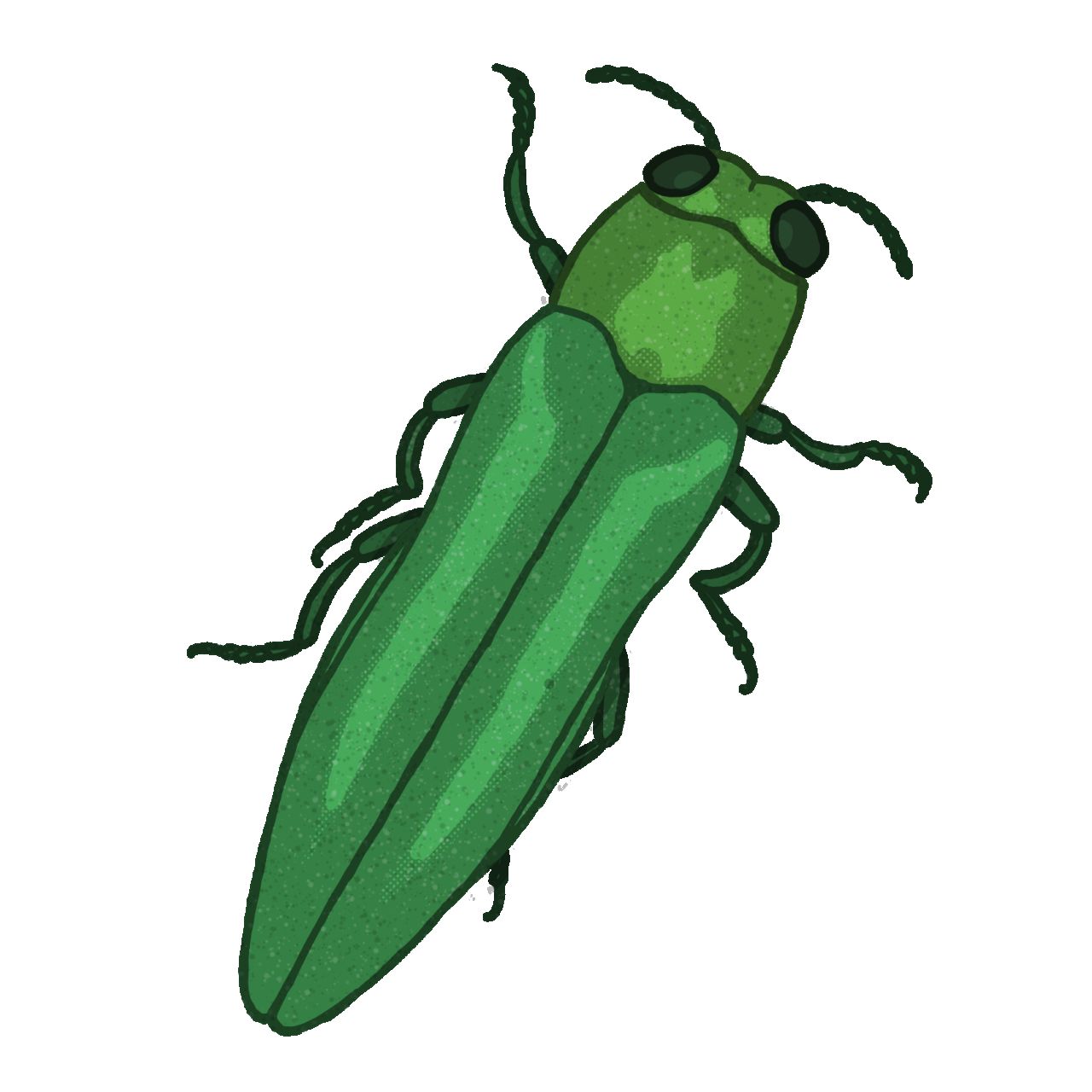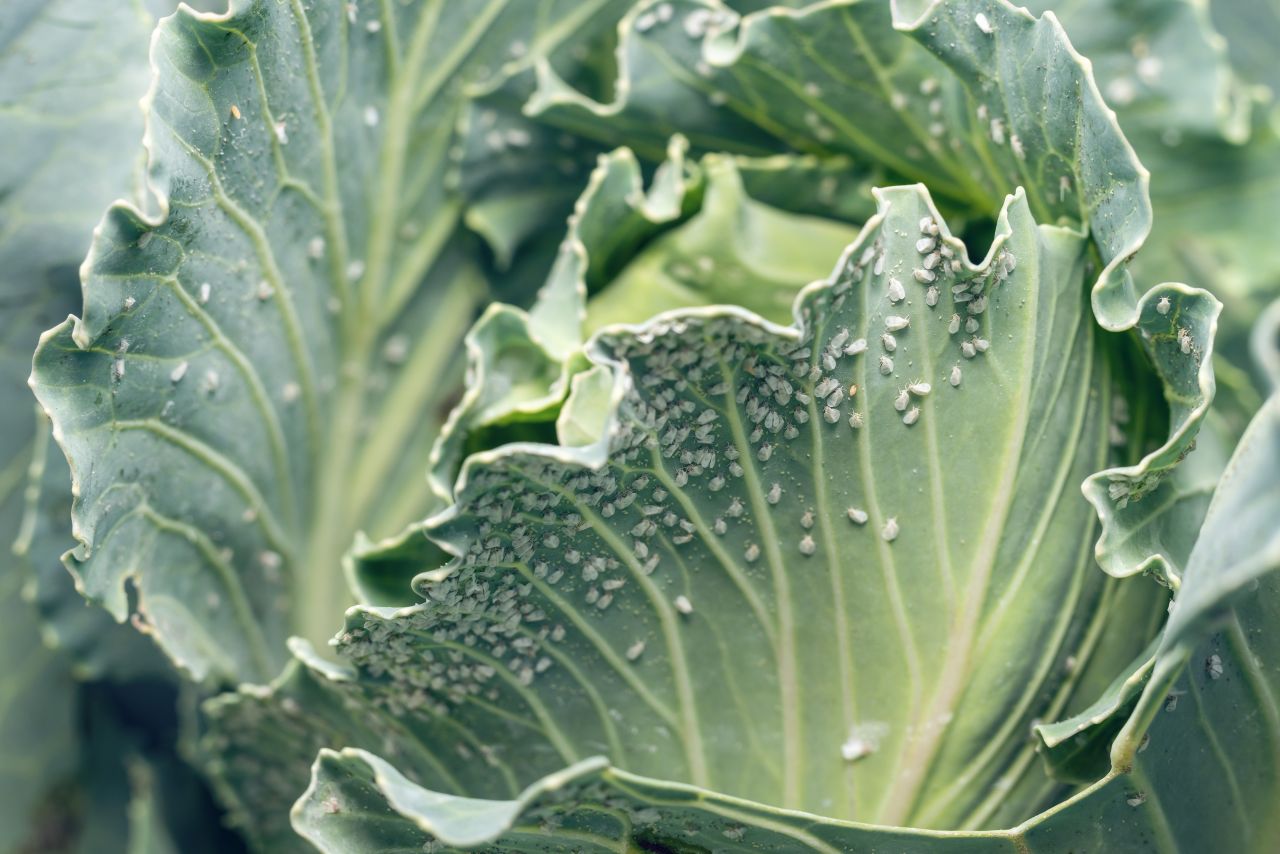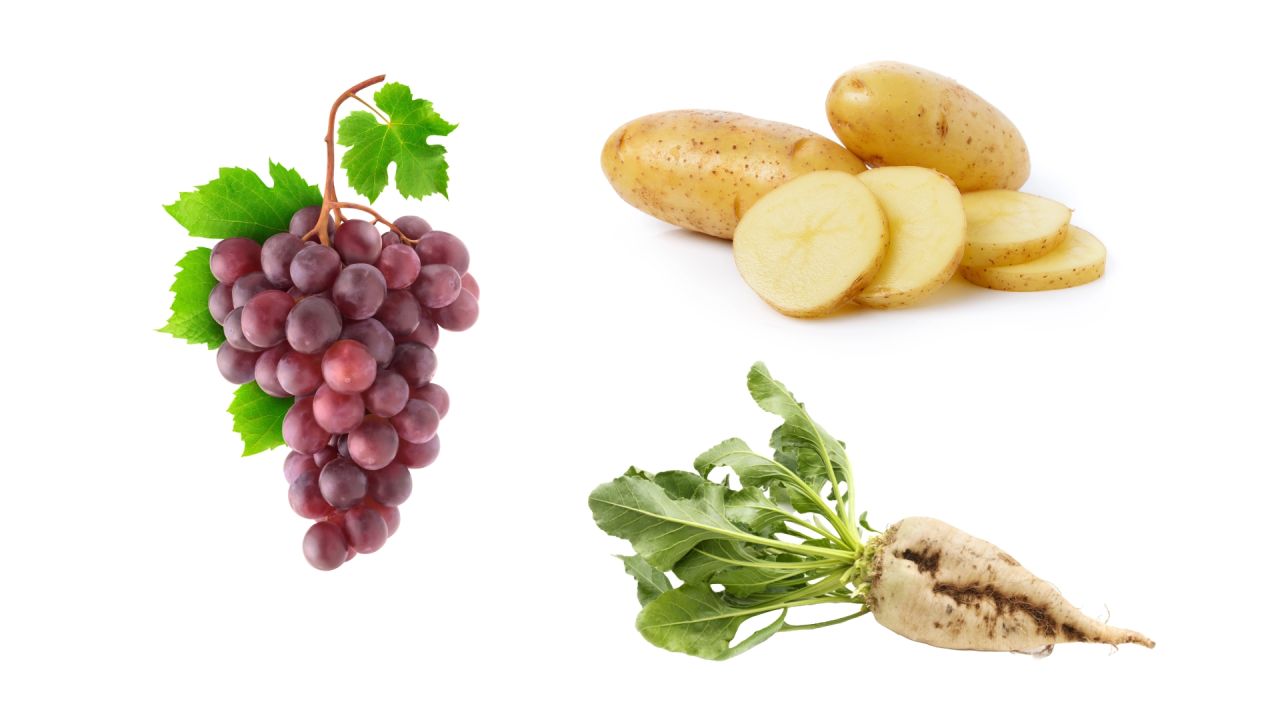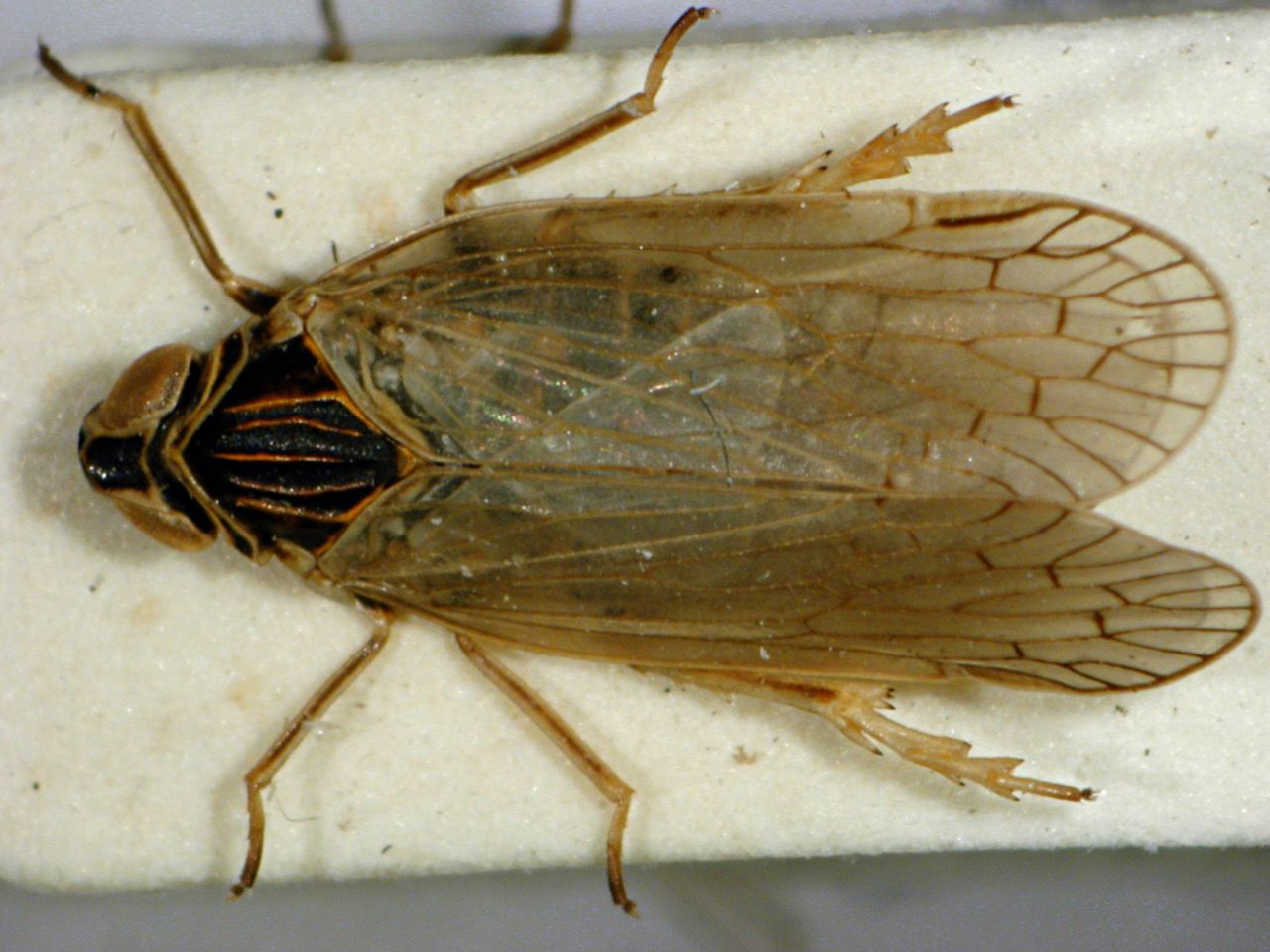Insects vs plants
Insects are crucial to ecosystems, but in Switzerland, invasive pests threaten vital crops like grapes, potatoes, and sugar beets. As climate change accelerates their spread, innovative methods like radar technology and pest management strategies are helping us monitor and protect agriculture.

The emerald ash borer is an invasive beetle that kills ash trees by feeding on their inner bark. Image: © Martin Breu
With a growing global population, agriculture faces a major challenge: increasing crop productivity while managing pests. Insects are essential for pollination and food production, yet some can be highly destructive. When pest populations grow out of control, they can damage crops, livestock, and forests, leading to significant yield losses. To safeguard food security, their numbers must be closely monitored, and effective measures taken to minimize their impact.
Humans have been battling insects since the beginning of agriculture. Depending on the species, insects feed on plant leaves, roots, sap, fruits, or seeds. When present in large numbers, these pests overwhelm plants, sometimes leading to complete loss of yields. The bigger threat, however, is the diseases pests spread. Much like mosquitoes, many herbivorous insects carry microorganisms that can transmit fatal diseases to plants.

Whitefly (Aleyrodes proletella) is an agricultural pest that affects cabbage leaves. Image: Adobe Stock
The arms race between plants and insects drives continuous evolution. Plants evolve defenses like toxins, thorns, and tough leaves to deter insects, while some attract natural predators when attacked. In turn, insects develop adaptations to overcome these defenses, such as toxin resistance or specialized mouthparts. Humans contribute to this battle through pest management strategies, such as using chemical pesticides, biological control agents, or integrated pest management (IPM) to combat native insect pests.
Thousands of years of agricultural practices and scientific advancements have shaped effective strategies for managing local insect populations. However, insects are highly mobile and continuously expand into new regions. They are also extremely sensitive to climate changes, with temperature playing a crucial role in their survival and reproduction. Studies show that rising temperatures cause insects to hatch earlier each year and, in some cases, complete an additional generation within a single season. A striking example is the codling moth (Cydia pomonella), a major pest of apple, pear and walnut orchards.
Under current climatic conditions, northern Switzerland typically experiences a single larva generation of codling moth per year, whereas two generations are observed in southern Switzerland. However, during warmer years, a second generation may emerge in northern regions, while southern Switzerland could sustain a third generation, highlighting the influence of temperature on insect development.
Invasive insect pests
The spread of invasive insect species has accelerated in recent decades, primarily due to climate change. Factors like international trade and travel have contributed to the introduction and expansion of these non-native pests. Insect eggs are tiny and resistant, enduring difficult conditions through their journey in a cargo package or in the soil on the sole of your shoes after a hike in an exotic country.
In Switzerland, invasive species such as the spotted-wing drosophila (Drosophila suzukii), Mediterranean fruit fly (Ceratitis capitata), Japanese beetle (Popillia japonica), brown marmorated stink bug (Halyomorpha halys), and tomato leaf miner (Tuta absoluta) have all recently been detected.

The Mediterranean fruit fly (Ceratitis capitata) is a destructive pest that targets a wide range of fruits, causing significant agricultural damage. Image: Wikimedia Commons/ Alvesgaspar, CC License
Three important Swiss crops and their enemies

A delicious glass of wine, potatoes accompanying a hearty raclette, a melt-in-the-mouth piece of chocolate ... Many Swiss products come from crops grown in Switzerland. Image: Collage from Adobe Express (1-2) and Adobe Stock (3)
Grapes
Grapevines are highly susceptible to Flavescence dorée phytoplasma, a devastating disease transmitted by the leafhopper Scaphoideus titanus, which acts as a vector for the bacterium Candidatus Phytoplasma vitis. Once infected, there is no cure, and affected vines must be uprooted and burned to prevent further spread. Current research is monitoring the disease’s presence in Switzerland, where it has already become widespread in the Ticino and Lavaux regions. Given the rapid spread of S. titanus, Europe must develop new strategies to manage this vector and mitigate its impact on viticulture.
Potatoes
Potatoes are a staple crop in Switzerland and many other countries, but an emerging threat, Potato tuber necrotic ringspot disease (PTNRD), poses a significant risk to production. This viral disease is transmitted both through human activities (e.g., use of contaminated tools) and by aphids (Hemiptera) through sap-feeding. Among its causative agents, Potato virus Y (PVY) is one of the most destructive plant viruses, leading to severe economic losses in potato cultivation.
One approach to mitigating PTNRD is the application of mineral oil to potato leaves, which disrupts virus transmission. This method interferes with aphid mouthparts, preventing them from spreading the disease. However, its effectiveness is short-lived, as rainfall necessitates frequent reapplications, making disease management challenging. In Switzerland, Agroscope is actively monitoring PTNRD by tracking winged aphid populations using traps and modeling the virus's potential spread to inform control strategies.
Sugar beets
Sugar beet crops are severely affected by the planthopper Pentastiridius leporinus, a vector of bacterial pathogens responsible for syndrome ‘basses richesses’ (SBR). The vector deposits its eggs on sugar beet roots, where emerging nymphs feed and develop. To complete their life cycle, these insects migrate to winter wheat fields that serve as an alternative host. Infected sugar beet plants exhibit characteristic yellowing of leaves, and currently, no chemical control measures are available to combat SBR. While certain sugar beet strains exhibit partial resistance, the rapid evolution of bacterial pathogens poses a risk of overcoming this tolerance, potentially expanding the disease's impact. Understanding the spread of SBR is therefore critical, as uncontrolled outbreaks could severely threaten sugar production in Switzerland and across Europe.

The planthopper Pentastiridius leporinus is a major pest of sugar beets. Image: Wikimedia Commons/ Michael F. Schönitzer, CC License
This topic examines various methods and strategies for monitoring insect pests, with a particular emphasis on invasive species in Switzerland. Experts highlight current approaches to mitigating their economic and ecological impact. Effective monitoring techniques, such as environmental DNA (eDNA) analysis, integrated pest management strategies and the release of biological control agents, play a crucial role in preventing significant losses.
References
Oerke EC. 2005. Crop losses to pests The Journal of Agricultural Science 144;1:31-43. doi:10.1017/S0021859605005708 https://www.cambridge.org/core/journals/journal-of-agricultural-science/article/crop-losses-to-pests/AD61661AD6D503577B3E73F2787FE7B2
National Center for Climate Services 2023. Priority theme pests. https://www.nccs.admin.ch/nccs/en/home/sectors/agriculture/impacts-pests.html Accessed 19.03.2025
